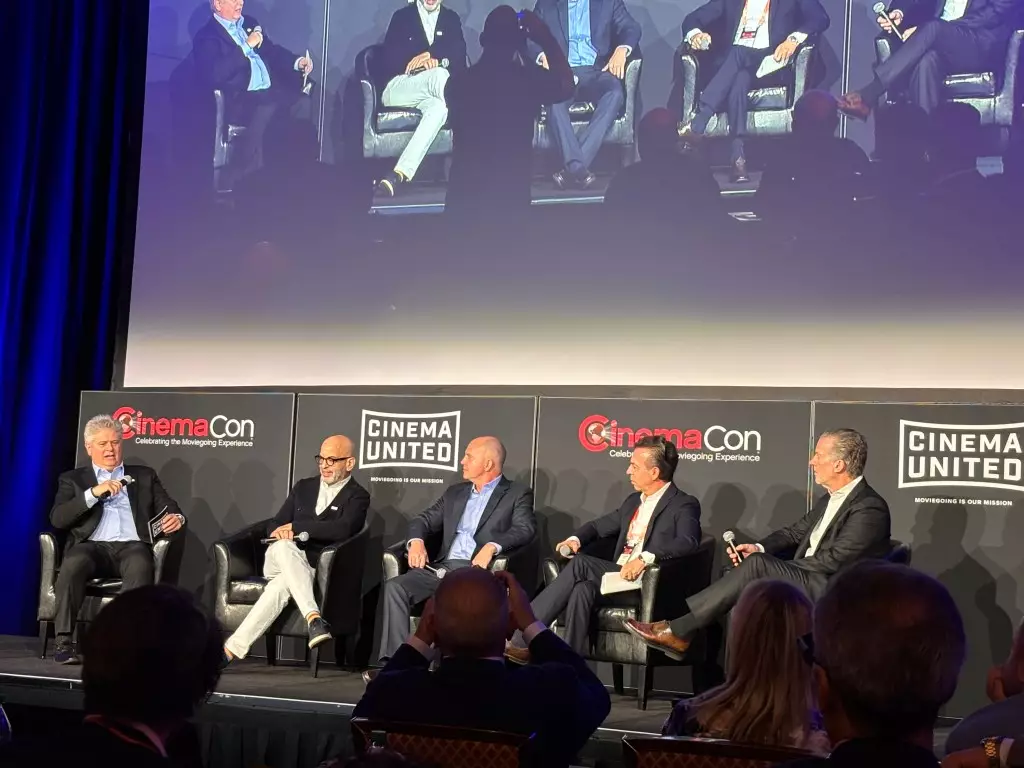As Hollywood grapples with exorbitant production and marketing expenses, the very essence of filmmaking—the story—stands at risk of being compromised. Jeff Goldstein, president of Global Distribution for Warner Bros. Pictures, highlighted this issue at a recent CinemaCon forum. In an era where the economics of film-making feel more burdensome than ever, the industry now faces the Sisyphean task of staying financially viable while trying to entertain audiences. The burning question remains: how can studios create profitable films in this complicated landscape?
The dramatic inflation in production costs is a symptom of a larger malaise affecting Hollywood. With technology accelerating the spread of public opinion on films, particularly through social media, studios are stuck in a paradox. Despite spending exponentially more on marketing, they are witnessing decreasing returns for their investment. This is a direct challenge to creativity, as executives prioritize a more formulaic approach that prioritizes profit over artistic vision. The endless cycle of chasing audience approval can dilute the very uniqueness that film can offer, relegating innovative projects to the sidelines in favor of safer, predetermined routes.
The Problem with Marketing in Today’s Climates
As Goldstein emphasizes, the dynamics of film marketing have been upended in today’s climate. No longer is it sufficient to simply capture promotional moments; now, studios are tasked with taking precise aim at a fragmented audience. Each message must land squarely in the sweet spot, yet achieving this is no easy feat. Mark Viane, president of International Distribution at Paramount Pictures, echoes this sentiment as he laments the failed marketing strategies of past films, asserting that last month’s successful approach may fall flat this time around.
Exceedingly high marketing budgets often yield underwhelming results, which sends shockwaves through studio executives. The very nature of consumer attention has shifted dramatically—an unfavorable response can spread like wildfire, leading to immediate reputational damage. Consequently, the need to govern creative impulses in favor of trending themes and established narratives has become ever more pronounced. This environment leaves little room for experimentation, effectively curbing the possibilities for new ideas to flourish.
How Fragmentation is Stifling Creativity
In a climate where audience preferences are increasingly diverse, attempts to reach a “one-size-fits-all” demographic are futile. As Goldstein articulately notes, the fragmented nature of the market requires studios to nail multiple ‘bullseyes’ to effectively connect with different audience segments. This almost insurmountable pressure for pinpoint accuracy links back to a general trend in Hollywood: the desire to minimize risk at the expense of creativity.
The weight of expectation creates a stifling atmosphere for artistic expression, where professionals trained in narrative design succumb to the shackles of financial forecasting. Directors and writers must second-guess their instincts, filtering their ideas through a lens of what is marketable rather than what is compelling. Thus, Hollywood risks turning into a factory of forgettable films, rather than the transgressive, translatable medium it once was.
Costs Detracting from the Cinematic Experience
Viane clearly articulates another significant challenge—the overall experience of attending a cinema. Just as a poor dining experience drives customers away from a restaurant, a subpar visit to a theater can detract audiences from returning. Pre-show advertisements and other distractions can sour the mood long before the opening credits roll.
This focus on profitability is taking place at the expense of enhancing the cinematic experience itself. Instead of crafting a holistic environment for moviegoers, cinemas often bombard patrons with unnecessary content, treating them like consumers rather than fostering an appreciation for storytelling. As fleeting trends capture attention, a profound question emerges: Are we losing sight of the transformative power of cinema in our quest for profit?
The intertwined issues of escalating costs, fragmented audience preferences, ineffective marketing, and deteriorating cinema experiences stand as an existential crisis for the film industry. Ironically, as Hollywood tries to safeguard profitability through calculated strategies, it may very well be derailing its most critical asset—creative storytelling. The film industry must recalibrate its priorities; otherwise, what transpired in film history as bold, boundary-pushing content will tragically fade into a sea of mediocrity.

